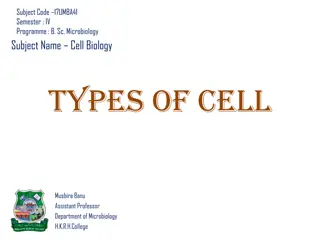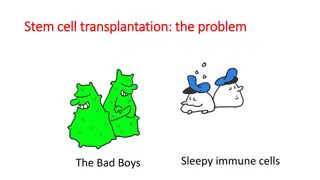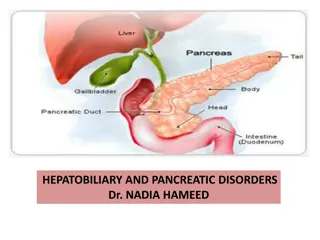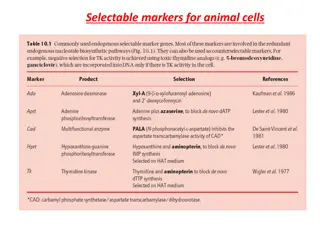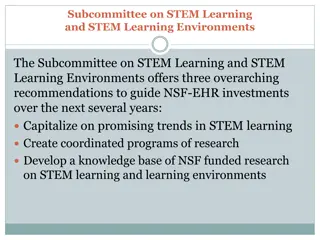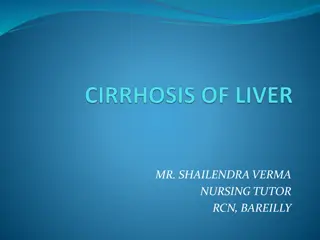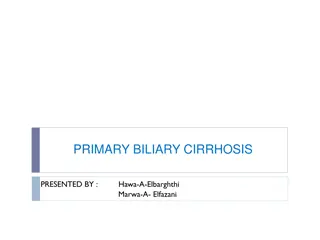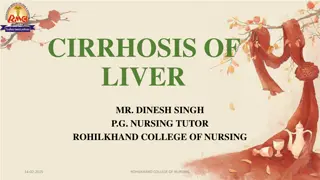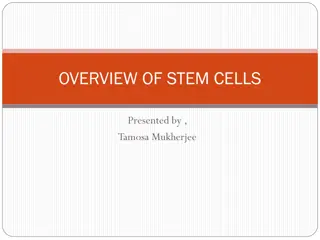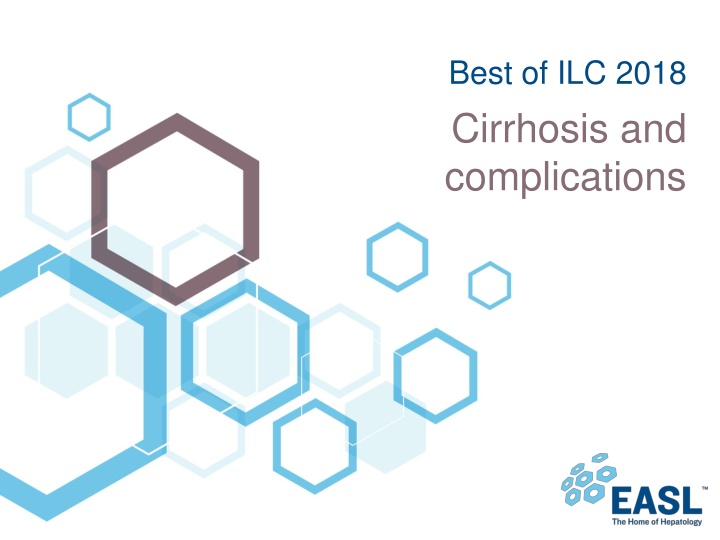
Therapeutic Potential of Human Amniotic Stem Cells for Cirrhosis
Characterizing the effects of human placenta-derived stem cells on cirrhosis in pre-clinical models, showing significant reductions in portal pressure, liver fibrosis, and improvements in hepatocyte function, inflammation, and endothelial phenotype. Human amniotic stem cells present a promising therapeutic strategy for portal hypertension and cirrhosis.
Download Presentation

Please find below an Image/Link to download the presentation.
The content on the website is provided AS IS for your information and personal use only. It may not be sold, licensed, or shared on other websites without obtaining consent from the author. If you encounter any issues during the download, it is possible that the publisher has removed the file from their server.
You are allowed to download the files provided on this website for personal or commercial use, subject to the condition that they are used lawfully. All files are the property of their respective owners.
The content on the website is provided AS IS for your information and personal use only. It may not be sold, licensed, or shared on other websites without obtaining consent from the author.
E N D
Presentation Transcript
Best of ILC 2018 Cirrhosis and complications
About these slides These slides provide highlights of new data presented at the International Liver Congress 2018 Please feel free to use, adapt, and share these slides for your own personal use; however, please acknowledge EASL as the source Definitions of all abbreviations shown in these slides are provided within the slide notes These slides are intended for use as an educational resource and should not be used to make patient management decisions. All information included should be verified before treating patients or using any therapies described in these materials
Contents 1. Treatment strategies PS-009 Stem cells as a new therapeutic strategy for portal hypertension and cirrhosis PS-078Therapeutic plasma-exchange improves systemic inflammation and survival in patients with acute on chronic liver failure PS-137 Effect of -blockers on the systemic hemodynamics of decompensated cirrhosis and survival Click here to skip to this section Click here to skip to this section 2. Bacterial infections GS-001Epidemiology, predictors and outcomes of multi drug resistant bacterial infections in patients with cirrhosis across the world. Final results of the "Global study" PS-080Adherence to EASL antibiotic treatment recommendations improves the outcomes of patients with cirrhosis and bacterial infections. Results from the ICA Global Study GS-015Primary SBP Prophylaxis is associated with greater ICU admission and 30-day mortality compared to Secondary SBP Prophylaxis PS-015Gut microbiome is profoundly altered in acute-on-chronic liver failure as evaluated by quantitative metagenomics. Relationship with liver cirrhosis severity PS-016Diet affects gut microbiota and modulates hospitalization risk differentially in an international cirrhosis cohort Click here to skip to this section Click here to skip to this section
Stem cells as a new therapeutic strategy for portal hypertension and cirrhosis Aim: Characterize the effects of human placenta-derived stem cells in a pre-clinical model of cirrhosis 4x106 viable hAMSCs or hAECs CCl4-cirrhotic rats Measure Transplantation 2 weeks efficacy parameters hAMSCs and hAECs significantly lowered PP through reduction in HVR hAMSCs and hAECs ameliorated liver fibrosis 30 -20% p=0.1 Haemodynamic parameters PP (mmHg) PBF (mL/min) HVR (mmHg*min/mL) MAP (mmHg) Veh hAMSCs p hAECs p 20 Fibre 15.4 0.7 12.8 0.7 0.01 12.3 0.7 12.7 1.6 10.5 1.2 0.2 0.005 0.3 (%) 14.7 1.8 10 1.4 0.2 1.4 0.2 0.7 0.9 0.1 0.02 83.4 4.8 96.0 5.6 0.09 82.5 5.6 0.3 0 Veh hAMSCs hAECs hAMSCs improve hepatocyte function, inflammation and endothelial phenotype 1.5 Veh 21 1.2 hAMSCs 24 0.7 0.04 p hAECs 24 3.5 p Relative vWF 0.3 Albumin (g/L) Bilirubin (mg/dL) expression 1.0 0.7 0.2 0.1 0.0 0.03 0.2 0.1 0.07 -60% * -65% * 0.5 Conclusion: Transplanted human amniotic stem cells are potentially a viable therapy for cirrhosis and portal hypertension 0.0 Veh hAMSCs hAECs Fern ndez-Iglesias A, et al. ILC 2018, PS-009
Therapeutic plasma exchange improves systemic inflammation and survival in patients with acute-on-chronic liver failure (ACLF) Aim: To evaluate artificial liver support (ALS), plasma exchange (PE) and liver dialysis (FPSA) vs. standard medical treatment (SMT) for ACLF ALS associated with significantly (p<0.05) higher resolution of SIRS, reduced new-onset SIRS and MOF Pre-match, % (n=1866) ALS 75 13 PRS-matched, % (n=208) ALS 75 14 ALS vs. SMT, % Resolution of SIRS New SIRS SMT 46 39 SMT 30 39 Methods: Retrospective data from AARC cohort study (www.aclf.in) was analyzed and matched by propensity risk score (PRS) to avoid selection bias Development of MOF 25 49 11 48 Results: ALS-treated patients had significantly lower MELD (p=0.03) and CTP scores (p=0.04) PE associated with a significant improvement in 28- day mortality vs. FPSA (9% vs. 26%; p=0.003) PE associated with significantly (p<0.05) improved liver failure-related mortality Hazard ratio (95% CI) SMT vs PE vs FPSA 28-day mortality*, 0.19 (0.11 0.37) 0.56 (0.28 1.13) 90-day liver failure- related mortality 0.34 (0.15 0.77) 0.19 (0.03 1.49) Conclusions: In patients with ACLF, ALS improves systemic inflammation, lowers development of MOF and results in improved survival PE has a significant survival benefit over FPSA and should be the therapy of choice in these patients Pre-match PRS- matched 0.07(0.03-0.18) 0.27(0.11 0.67) 0.13(0.05 0.32) 0.04(0.004 0.45) *Cox regression analysis; Differences for 90-day mortality were not significant; Competing risk analysis Maiwall R, et al. ILC 2018, PS-078
Effect of -blockers on the systemic haemodynamics of decompensated cirrhosis and survival Aim: Evaluation of the effect of -blockers on survival in advanced cirrhosis Multiple factors associated with mortality Age (years) Baseline Child Pugh HVPG at 1 3 months CO at 1 3 months HR (95% CI) p-value Patients with decompensated cirrhosis (all had ascites) and high-risk varices (without previous bleeding) 1.05 (1.01, 1.09) 1.71 (1.43, 2.24) 1.15 (1.07, 1.24) 0.84 (0.69, 0.99) 0.010 <0.001 <0.001 0.04 Patients with decompensated cirrhosis (all had ascites) and high-risk varices (without previous bleeding) Baseline haemodynamic study* Treatment with non-selective -blockers (NSBBs) Survival according to CO at 1 3 months on NSBBs 1.0 Control haemodynamic study (1 3 months under treatment with NSBBs) Assessment of haemodynamic changes and influence on survival 0.8 Results: 150/190 (79%) patients had further decompensation, 73 patients (38%) died Median FU: 36 (IQR 16 62) months Conclusion: These results suggest monitoring CO under treatment with NSBBs may achieve more accurate dose adjustment and improve outcomes in advanced cirrhosis 0.6 CO >5 L/min Survival 0.4 0.2 HR (CI 95%)= 2.40 (1.37 4.20) p=0.002 (log-rank) CO 5 L/min 0.0 0 12 24 36 48 60 72 84 96 108 120 Time (months) *Portal pressure (estimated by HVPG), cardiopulmonary pressures and cardiac output (via thermodilution) were measured; 74% had worsening of ascites, 14% had variceal bleeding; Cox hazard regression Alvarado E, et al. ILC 2018, PS-137
Epidemiology, predictors and outcomes of multidrug-resistant bacterial infections in patients with cirrhosis across the world The intercontinental Global study investigated the epidemiology and outcome of bacterial/fungal infections in hospitalized patients with cirrhosis MDR bacteria infection were associated with: Lower rate of response to empirical antibiotic treatment (40 vs. 68%; p<0.001) Higher incidence of shock (27 vs. 15%; p<0.001) New organ failures (42 vs. 31%; p=0.001) Lower rate of resolution of infection (82 vs. 72%; p=0.003) Higher in-hospital mortality (31 vs. 21%; p=0.004) Patient location (%) and global MDR bacteria prevalence Methods: Demographic, clinical, microbiological and treatment data collected from 1,302 patients at 46 centres Independent risk factors for MDR infections OR 2.79 7.94 2.23 p-value 0.017 <0.001 0.053 Conclusions: There is a need to develop different empirical antibiotic strategies across different continents and countries. Every effort should be made to reduce the spread of MDR bacteria in cirrhosis Infection in Asia Infection in India Infection in South America Results: The most common infections were SBP (27%), UTI (22%) and pneumonia (19%) The global prevalence of multidrug-resistant (MDR) bacteria* was 34% Antibiotic use in last 3 months Nosocomial infection Healthcare-associated infection Pneumonia UTI Skin/soft tissue infection 1.92 2.65 1.62 3.20 2.48 2.92 0.001 <0.001 0.032 <0.001 <0.001 0.004 *MDR bacteria were defined as resistant to at least one antibiotic in >2 classes Piano S, et al. ILC 2018, GS-001
Adherence to EASL antibiotic treatment recommendations improves the outcomes of patients with cirrhosis and bacterial infections Weaker than recommended antibiotic regimens were associated with reduced antimicrobial susceptibility Assessment of the clinical impact of adherence to EASL recommendations on antibiotic treatment* among patients in the ICA Global Study Methods: Demographic, clinical, microbiological and treatment data were collected from 1,302 patients Results: Antibiotic treatment was adherent to EASL recommendations for 61% of patients Adherence was poorer in pneumonia (27% vs. 71%; p<0.001) and nosocomial infection (54% vs. 64%; p=0.002) Bacteria isolated in Asian centres had lower susceptibility to recommended antibiotics (58% vs. 80%; p<0.001), mainly due to MDR bacteria (51 vs. 28%; p<0.001) Conclusions: Adherence to EASL recommendations was associated with better outcomes in patients with cirrhosis and bacterial infections Different strategies should be developed in countries with high MDR bacteria prevalence Weaker than recommended antibiotic regimens were associated with higher risks New organ failures OR 1.50 p=0.010 OR 0.51 p=0.044 Septic shock In-hospital mortality OR 1.47 p=0.034 0 0.5 1 1.5 2 2.5 3 Favours lack of adherence Favours adherence *Treatment was considered adherent if 1 recommended antibiotic/combination was administered; To administered antibiotic; Adjusted for age, ACLF, quick SOFA and MELD-Na score Piano S, et al. ILC 2018, PS-080
Primary SBP prophylaxis is associated with greater ICU admission and 30-day mortality compared to secondary SBP prophylaxis Aim: Comparison of primary vs. secondary prophylaxis for spontaneous bacterial peritonitis (SBP) in patients with cirrhosis from a large inpatient cohort (the NACSELD database) Methods: Inpatients with cirrhosis and on primary or secondary prophylaxis (n=154 each) were propensity matched for admission MELD score and serum albumin Results: 100 90 Primary Secondary P<0.0001 80 Outcome (%) 65 60 P=0.005 P=0.02 P=0.05 40 33 40 31 P=0.01 P=0.01 24 23 21 20 19 20 10 9 0 Infection SBP Hospitalized in last 6 months SIRS ICU 30-day mortality Conclusions: Despite prophylaxis, a significant number of patients developed SBP Unexpectedly, patients on primary prophylaxis had poorer outcomes The value of both primary and secondary prophylaxis requires re-evaluation Bajaj JS, et al. ILC 2018, GS-015
Gut microbiome is profoundly altered in acute-on-chronic liver failure as evaluated by quantitative metagenomics Aim: Investigation of gut microbiome alterations across the spectrum of disease (outpatients, AD, ACLF) Methods: Microbial genes from stool DNA grouped into metagenomic species (MGS) based on abundance, and analyzed using non-parametric tests* and Spearman s correlation Disease stage correlates with reduced gene richness Patient status at 3 months Results: 290/1,158 MGS contrasted between 1 disease stage. 44 contrasted between AD and ACLF Disease severity and organ failure correlated with human DNA in stools Conclusions Increasing disease severity is characterized by marked reductions in gene richness, especially in ACLF 1.00 Gene count (millions) Gene count (millions) 300 0.75 200 0.50 100 0.25 0.00 0 LTx Dead AD ACLF Comp Decomp Number of organ failures, and MELD and Child Pugh scores, correlate with three Enterococcus MGS MELD *Kruskal Wallis or Dunn tests Spearman s correlations Sole C, et al. ILC 2018, PS-015
Diet affects gut microbiota and modulates hospitalization risk differentially in an international cirrhosis cohort Aim: Investigation of the impact of diet on gut microbiota and clinical outcomes in patients with cirrhosis Methods: 90 day study of gut microbiota diversity and dietary profile in 296 age-matched healthy controls and outpatients with compensated or decompensated cirrhosis from the USA and Turkey US patients had lower microbial diversity with disease progression Results: US patients with cirrhosis and a Western diet (more coffee) had more advanced disease than Turkish patients (greater tea, fermented milk and chocolate intake), p<0.01 Coffee, tea, vegetable, chocolate and fermented milk predicted higher microbial diversity Turkish patients had lower 90-day hospitalization risk, associated with microbial diversity, coffee/tea, vegetable and cereal intake 11 p<0.001 p=0.46 p<0.001 10 9 Shannon Diversity Index 8 7 6 5 p<0.001 4 3 2 Control Comp USA Decomp Control Comp Turkey Decomp Conclusion: Microbial diversity, driven by diet, is associated with an independently lower risk of 90-day hospitalization in cirrhosis Bajaj JS, et al. et al. ILC 2018, PS-016









